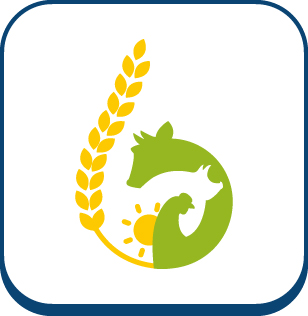Salmonella in the French Pig and Pork Industry: Heavy Metal and Antibiotic Resistance (2014–2024)
Background: Antibiotic-resistant Salmonella in the pig and pork industry represents an increasing public health concern, as Salmonella remains one of the leading causes of foodborne infections linked to pork consumption in France and the EU. Since the EU’s 2006 ban on antibiotics as growth promoters, heavy metals such as copper, zinc, and silver have been used, among others, as antimicrobial agents throughout the production chain. In Gram-negative bacteria, studies have shown that resistance genes for both antibiotics and heavy metals can co-occur and, in some cases, co-localize on mobile genetic elements, facilitating their persistence and dissemination. However, the extent and mechanisms of such co-selection in Salmonella remain poorly understood. This study, implemented in One Health framework, aims to characterize heavy metal and antibiotic resistance genes, explore their co-localization, and investigate potential cross-resistance mechanisms. Methods: Over 800 Salmonella strains, spanning the pig production chain and human clinical cases from 2014 to 2024, was collected and Illumina sequenced. Phylogenetic and pangenome analyses were performed to assess genetic diversity and the composition of core and accessory genomes. The resistome was thoroughly characterized using multiple public databases, and the mobilome (plasmids, transposons, integrons, and integrative and conjugative elements (ICEs)) was examined to predict possible co-localization of resistance determinants. Results and discussion: Between 2014 and 2024, Salmonella serovars S. Typhimurium, its monophasic variant, and S. Derby were the most frequently isolated along the pig production chain, alongside 26 additional serovars. The distribution of strains varied across different production stages, with the highest distribution observed at the livestock and slaughterhouse levels. Ongoing genomic analyses aim to identify resistant strains to investigate the potential for horizontal gene transfer and possible cross-resistance between antibiotics and heavy metals commonly used in pig farming. These investigations will be supported by long-read sequencing and phenotypic assays. This study will provide valuable insights into the persistence and dissemination of resistant Salmonella in pig and pork production systems
Fiche technique
Titre :
Salmonella in the French Pig and Pork Industry: Heavy Metal and Antibiotic Resistance (2014–2024)
Date sortie / parution :
2025
Référence :
International Symposium on Salmonella and Salmonellosis (I3S), 23-25 juin 2025, Saint-Malo, France








